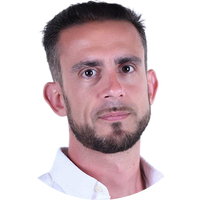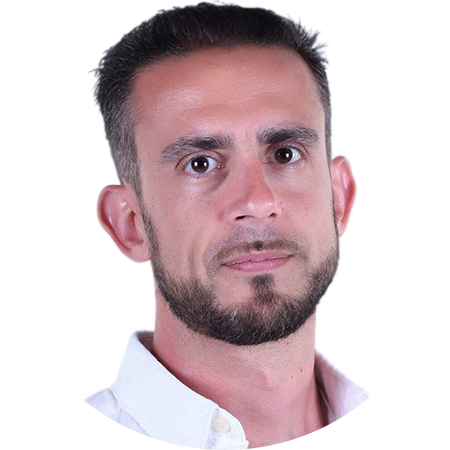How to avoid the savings interest tax trap
Savers are being urged to look at ways to shelter their cash from the taxman as the tax burden on savings escalates.

Daniel Hilton

Millions of savers could face a surprise tax bill on their savings due to frozen allowances and thresholds.
Savers have benefited from high savings rates in recent years, despite interest rates dropping, but many could be hit by the savings interest tax trap.
There are some allowances that provide protection from tax on savings interest.
MoneyWeek
Subscribe to MoneyWeek today and get your first six magazine issues absolutely FREE

Sign up to Money Morning
Don't miss the latest investment and personal finances news, market analysis, plus money-saving tips with our free twice-daily newsletter
Don't miss the latest investment and personal finances news, market analysis, plus money-saving tips with our free twice-daily newsletter
The main one is the personal savings allowance (PSA), which lets basic rate taxpayers earn the first £1,000 of interest from savings tax-free, dropping to £500 for higher-rate taxpayers.
This hasn’t changed since the PSA was launched in 2016 though and more savers are getting hit with a tax bill as savings rates have improved.
HMRC estimates that 2.07 million people will have paid tax on their savings interest in the 2024/25 tax year. This is up from around 650,000 just three years ago, according to research by AJ Bell.
This reduces how much interest savers can keep and affects all age groups.
Under-65s are expected to pay £3.6 billion in tax on savings interest in 2025/26– an increase of 186% compared with 2022/23, a Freedom of Information request by Paragon to HMRC found.
It may also impact how much over-65s have left for their retirement.
This age group is forecast to pay a combined total of £2.5 billion in tax on savings interest in the 2025/26 tax year.
But there are ways to avoid the savings tax trap.
We outline how you can protect your savings from being caught in the tax net.
Savings allowances explained
Tax on savings income is charged at your highest income tax rate, but various allowances can shelter some of it from tax. People with little other income may be able to use some of their personal allowance of £12,570 per year to earn interest tax-free.
They may also benefit from the starting rate for savings, an allowance that begins at £5,000 and is reduced by £1 for every £1 of other income above your personal allowance.
Once your other income gets above £17,570, you no longer get the starting rate for savings, but this is when the personal savings allowance kicks in.
What is the personal savings allowance?
Basic-rate taxpayers have a personal savings allowance where they can earn up to £1,000 of interest tax-free each year.
For higher-rate taxpayers, that drops to £500, while additional-rate taxpayers get no allowance.
One slightly counter-intuitive point to note about the personal savings allowance is that the interest counts when determining your tax bracket.
Consider a saver who had £49,500 in salary and £500 in savings income last year. She was just below the £50,270 higher-rate tax band and paid basic-rate tax.
Let’s say, this year, her interest rises to £1,500. This means she has £51,000 in total income, which pushes her into the higher-rate tax threshold and reduces her personal savings allowance to £500.
How much tax do you pay on savings interest?
Currently, the level of tax you pay on savings is similar to the existing income tax bands.
Basic rate taxpayers pay 20% on any interest earned above the savings allowances, while higher rate taxpayers will owe 40%.
But this is set to change in April 2027 when the rate of income tax applicable to savings income rises by two percentage points.
It will match the rates applicable to income from property.
The basic savings tax rate will be 22%, the higher rate will be 42%, and the additional rate will be 47%.
What size savings pots will be hit with tax?
If you have some savings that are not sitting in a cash ISA, you may be surprised at how quickly you breach your PSA and have to pay tax on the interest.
A higher-rate taxpayer has a £500 tax-free personal savings allowance. If you’re earning just 1% interest, you would need a balance of £50,000 to earn interest of £500 a year.
But most savers are earning more than that now, given the Bank of England rate is at 3.75%. A higher-rate taxpayer earning 3% on their cash would only need a balance of £17,000 to earn annual interest of £510 and bust their allowance.
How about a savings account paying 6%? You would only need to put £8,400 into that account to exceed your £500 allowance (as you’d earn £504 over the year). A higher-rate taxpayer who stashed £20,000 in a 6% account would enjoy annual interest of £1,200 – but would face a tax bill of £280 (£700 x 40% tax).
The top savings rates on the market right now mean you can still get up to 4.5% on easy-access accounts, and 7.5% if you make the best use of regular saver accounts.
Six options to shelter from tax
1. Use an ISA
Assuming that you still want to hold cash, rather than put it into investments or a pension, the first option is a cash individual savings account (ISA).
Interest is tax-free and you can currently get 4.27% on a top easy-access ISA, and up to 4.3% if you fix for one year. If you’re opening a new cash ISA – perhaps because the interest rate on your current one is rubbish – look out for ones that allow you to “transfer in” your old ISA, as this won’t count towards your annual allowance.
The current ISA allowance is £20,000 per year, meaning this is the maximum you can pay in across your ISAs (including a stocks and shares ISA) each tax year.
ISA rules are due to change though.
From 6 April 2027, under-65s will only be able to put a maximum of £12,000 into a cash ISA each tax year. This could impact how much cash you can save, although you are still able to put the rest in a stocks and shares ISA.
You could also look out for a flexible ISA, which lets you freely withdraw money and put it back within the same tax year, allowing you to take more control over your savings and cover any unforeseen expenses in life.
2. Buy Premium Bonds
If you’ve maxed out your £20,000 ISA limit and still have excess savings you need to shelter from the taxman, another option is National Savings & Investments’ Premium Bonds. These don’t pay interest, but tax-free monthly prizes ranging from £25 to £1 million are up for grabs. The prize fund rate is set to compete with prevailing interest rates.
The prize fund rate is currently 3.6% – but it’s skewed by the larger prizes that you are very unlikely to win. The average saver with average luck will get a much lower rate of return. Those with only a small amount are likely to end up with nothing.
However, with the maximum holding of £50,000, someone with average luck could expect to win about £1,900 per year. For a higher-rate taxpayer who would otherwise pay 40% tax on savings income, this means you will have avoided a £760 tax bill.
3. Overpay your mortgage
Mortgage rates have fallen over the past few months: the average two-year fix is now 4.81%, while the average five-year fix is 4.89%, according to data firm Moneyfacts.
If you have surplus cash now – and especially any savings that are at risk of being taxed – a smart move could be to overpay your mortgage. This will increase the equity you have in your home and could get you a cheaper rate when you come to remortgage.
Overpaying also has the effect of reducing the amount of interest you pay and helping you become mortgage-free faster.
Our mortgage overpayment calculator shows how your monthly repayments may change and help you work out if overpaying is worth it.
Before diverting your savings to overpaying your mortgage, it's wise to have an emergency fund of between three to six months worth of essential expenditure first, to make sure you are prepared for any unfortunate scenarios
4. Pay off other bills
Do you have any bills or debts that need to be paid off? It makes sense to get rid of those rather than stashing your money away in savings, only to find the taxman takes a slice of the interest.
As well as credit cards and personal loans, you may have bills to pay like your self-assessment tax return.
Self-employed workers usually make two payments on account each year, by 31 January and 31 July. It’s sensible to withdraw cash from a taxable savings account (in other words, not your cash ISA or Premium Bonds) to pay it.
5. Contribute to a pension
If you’re trying to reduce the amount of money you have in savings – and therefore reduce or eliminate a tax bill – another option is to pay into a pension.
This has the benefit of building up your nest egg for retirement – and most of us aren’t saving enough – plus you get tax relief from the government.
If you have a workplace pension scheme you may find that upping your contributions also attracts a bigger contribution from your employer – this is free money, so it’s definitely worth checking.
Alternatively, you could use a low-cost self-invested personal pension (Sipp). Bear in mind that pensions can’t be accessed until age 55 (rising to 57 in 2028), so this option does involve locking your money away.
Also note the annual allowance, which is the maximum you can pay into all your pension pots in one tax year. It is currently set at £60,000.
6. Consider other investments
There are other ways to save tax-free, but they involve investing your money. For example, stocks and shares ISAs, venture capital trusts (VCTs) and enterprise investment schemes (EISs) are all tax-efficient.
Before investing, think about your time horizon (in other words when you want to access the money), your attitude to risk and whether investing is right for you.
Jackie Hall, a partner at accountancy firm RSM, says taxpayers with significant savings and investments may need to think beyond their annual ISA allowance when considering ways to shelter their money.
She explains: “For these individuals, it may be time to think about using an alternative wrapper to house savings and investments, which may include an (offshore or onshore) investment bond.
“The tax charges are deferred until the bond is encashed, although small withdrawals of less than 5% can usually be made each year without giving rise to any tax implications.”
Another option is a personal investment company (PIC). According to Hall, making investments in a PIC wrapper will result in the company being assessed to corporation tax on the underlying income and gains at a rate of not more than 25%. This is 20% less than the top rate of income tax for individuals, which means there can be significant ongoing savings.
She adds: “However, a PIC may not be suitable for short-term investment plans, as an individual will generally incur an additional layer of taxation when extracting profits from the PIC.”
Get the latest financial news, insights and expert analysis from our award-winning MoneyWeek team, to help you understand what really matters when it comes to your finances.

Marc Shoffman is an award-winning freelance journalist specialising in business, personal finance and property. His work has appeared in print and online publications ranging from FT Business to The Times, Mail on Sunday and the i newspaper. He also co-presents the In For A Penny financial planning podcast.
-
 Pundits had a bad 2025 – here's what it means for investors
Pundits had a bad 2025 – here's what it means for investorsThe pundits came in for many shocks in 2025, says Max King. Here is what they should learn from them
-
 The MoneyWeek ETF portfolio – early 2026 update
The MoneyWeek ETF portfolio – early 2026 updateThe MoneyWeek ETF portfolio had a solid year in 2025 and looks well placed for what the next 12 months may bring
-
 Act now to bag NatWest-owned Ulster Bank's 5.2% easy access savings account
Act now to bag NatWest-owned Ulster Bank's 5.2% easy access savings accountUlster Bank is offering savers the chance to earn 5.2% on their cash savings, but you need to act fast as easy access rates are falling. We have all the details
-
 Moneybox raises market-leading cash ISA to 5%
Moneybox raises market-leading cash ISA to 5%Savings and investing app MoneyBox has boosted the rate on its cash ISA again, hiking it from 4.75% to 5% making it one of top rates. We have all the details.
-
 October NS&I Premium Bonds winners - check now to see what you won
October NS&I Premium Bonds winners - check now to see what you wonNS&I Premium Bonds holders can check now to see if they have won a prize this month. We explain how to check your premium bonds
-
 The best packaged bank accounts
The best packaged bank accountsAdvice Packaged bank accounts can offer great value with useful additional perks – but get it wrong and you could be out of pocket
-
 Bank of Baroda closes doors to UK retail banking
Bank of Baroda closes doors to UK retail bankingAfter almost 70 years of operating in the UK, one of India’s largest bank is shutting up shop in the UK retail banking market. We explain everything you need to know if you have savings or a current account with Bank of Baroda
-
 How to earn cashback on spending
How to earn cashback on spendingFrom credit cards and current accounts to cashback websites, there are plenty of ways to earn cashback on the money you spend
-
 John Lewis mulls buy now, pay later scheme
John Lewis mulls buy now, pay later schemeThe CEO of John Lewis has said the retailer will consider introducing buy now, pay later initiatives for lower-priced items.
-
 State pension triple lock at risk as cost balloons
State pension triple lock at risk as cost balloonsThe cost of the state pension triple lock could be far higher than expected due to record wage growth. Will the government keep the policy in place in 2024?